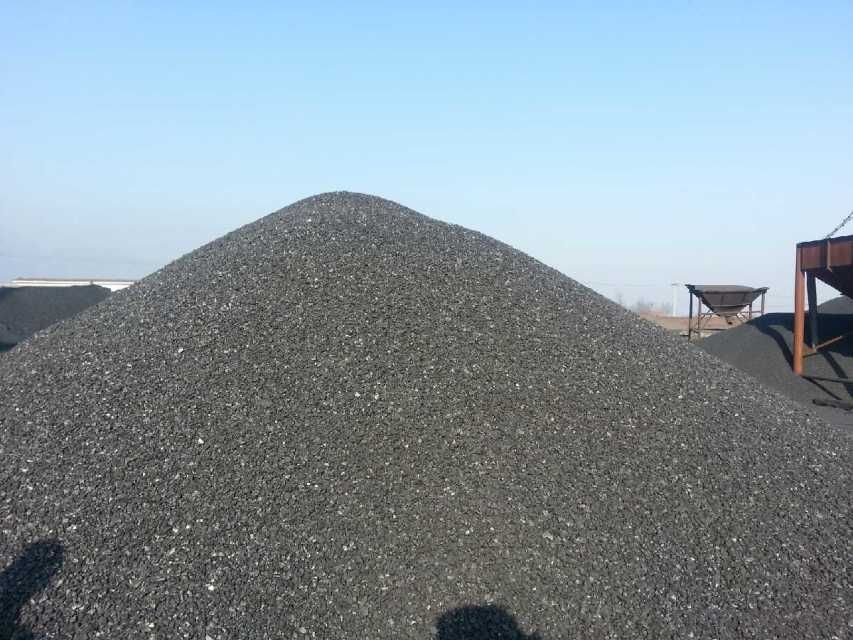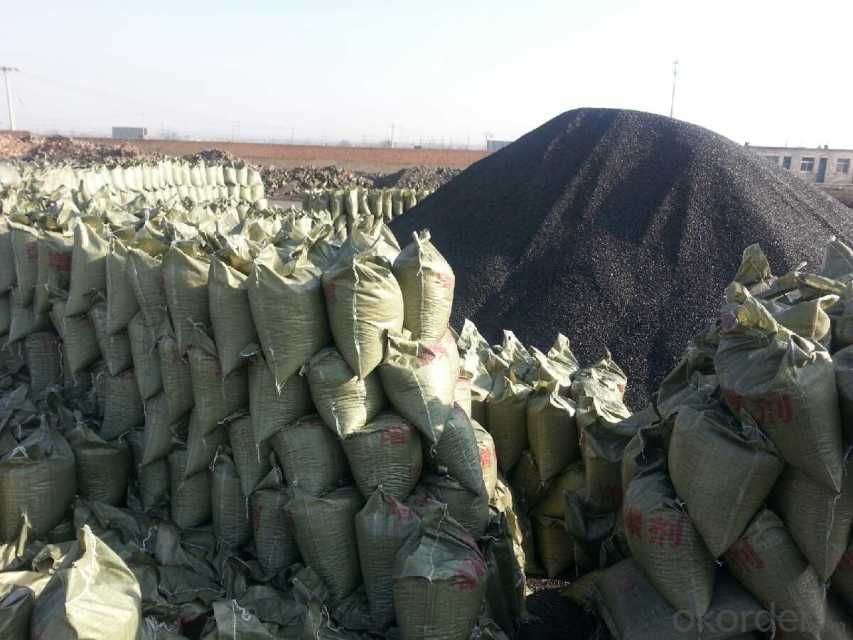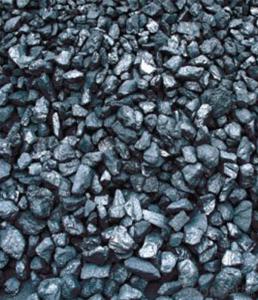Charge Coke FC92 with high and stable quality
- Loading Port:
- Tianjin
- Payment Terms:
- TT OR LC
- Min Order Qty:
- 20 m.t.
- Supply Capability:
- 3000 m.t./month
OKorder Service Pledge
OKorder Financial Service
You Might Also Like
Packaging & Delivery
25kgs/50kgs/1ton per bag or as buyer's request
Specifications
Calcined Anthracite
Fixed carbon: 90%-95%
S: 0.5% max
Size: 0-3. 3-5.3-15 or as request
It used the high quality anthracite as raw materials through high temperature calcined at over 2000 by the DC electric calciner with results in eliminating the moisture and volatile matter from anthracite efficiently, improving the density and the electric conductivity and strengthening the mechanical strength and anti-oxidation. It has good characteristics with low ash, low resistvity, low sulphur, high carbon and high density. It is the best material for high quality carbon products.
Advantage and competitive of caclined anthracite:
1. strong supply capability
2. fast transportation
3. lower and reasonable price for your reference
4.low sulphur, low ash
5.fixed carbon:95% -90%
6..sulphur:lower than 0.3%
General Specification of Calcined Anthracite:
| FC | 95 | 94 | 93 | 92 | 90 |
| ASH | 4 | 5 | 6 | 6.5 | 8.5 |
| V.M. | 1 | 1 | 1 | 1.5 | 1.5 |
| S | 0.3 | 0.3 | 0.3 | 0.35 | 0.35 |
| MOISTURE | 0.5 | 0.5 | 0.5 | 0.5 | 0.5 |
Pictures


- Q:How does carbon affect the formation of desertification?
- The formation of desertification is not directly affected by carbon. Rather, desertification is primarily caused by a combination of natural factors, such as climate change, prolonged drought, and human activities like deforestation and overgrazing. However, carbon does play an indirect role in exacerbating desertification through climate change. Carbon dioxide (CO2), a greenhouse gas, is released into the atmosphere through human activities, particularly the burning of fossil fuels. The increased concentration of CO2 in the atmosphere leads to global warming, which alters climate patterns and increases the frequency and intensity of droughts. Prolonged droughts deplete soil moisture, making the land more susceptible to erosion and degradation, thus contributing to the desertification process. Furthermore, carbon indirectly affects desertification through deforestation. Trees and other vegetation play a vital role in maintaining healthy soil by preventing erosion, retaining moisture, and providing shade. When forests are cleared, the carbon stored in trees is released into the atmosphere, contributing to higher CO2 levels. Additionally, the loss of vegetation cover exposes the soil to erosion by wind and water, which accelerates desertification. It is important to acknowledge that while carbon indirectly impacts desertification through climate change and deforestation, desertification itself is a complex process influenced by various factors. Addressing desertification requires a comprehensive approach involving sustainable land management practices, reforestation efforts, water management, and strategies to mitigate climate change.
- Q:How does carbon affect the acidity of oceans?
- Carbon dioxide (CO2) dissolves in seawater to form carbonic acid (H2CO3), which increases the concentration of hydrogen ions (H+) in the water, leading to ocean acidification. This decrease in pH affects marine life by hindering the ability of shell-forming organisms to build and maintain their shells, as well as impacting other vital biological processes.
- Q:How can carbon capture and storage help reduce greenhouse gas emissions?
- Carbon capture and storage (CCS) is a technology that can play a significant role in reducing greenhouse gas emissions. It involves capturing carbon dioxide (CO2) produced from industrial processes or power generation, transporting it, and then storing it underground in geological formations. Firstly, CCS can help reduce greenhouse gas emissions by capturing CO2 directly from large point sources, such as power plants or industrial facilities, that would otherwise be released into the atmosphere. By capturing and storing this CO2, it prevents it from contributing to the greenhouse effect and mitigates its impact on climate change. Secondly, CCS can enable the continued use of fossil fuels, such as coal or natural gas, in a more environmentally friendly manner. These fuels are currently the primary sources of energy for electricity generation and industrial processes. By implementing CCS, the CO2 emissions from these fossil fuel-based activities can be drastically reduced, allowing for a transition towards cleaner energy sources in a more gradual and economically feasible manner. Furthermore, CCS can also be coupled with bioenergy production, creating what is known as bioenergy with carbon capture and storage (BECCS). This process involves using biomass, such as crop residues or purpose-grown energy crops, to produce energy. The CO2 emitted during the bioenergy production is then captured and stored, resulting in a negative emissions process. BECCS can effectively remove CO2 from the atmosphere, helping to offset emissions from other sectors and achieving net-negative emissions. Lastly, CCS can contribute to the decarbonization of hard-to-abate sectors, such as cement and steel production, where alternative low-carbon technologies are currently limited. By capturing and storing CO2 emissions from these sectors, CCS can significantly reduce their overall greenhouse gas emissions and facilitate their transition towards more sustainable practices. In conclusion, carbon capture and storage technology can help reduce greenhouse gas emissions by directly capturing and storing CO2 from large point sources, allowing for the continued use of fossil fuels in a more sustainable manner, enabling the deployment of negative emissions technologies like BECCS, and supporting the decarbonization of hard-to-abate sectors. Implementing CCS alongside other mitigation strategies can play a vital role in achieving global climate goals and combating climate change.
- Q:Last night to go to the supermarket to buy 5 batteries, see Toshiba carbon batteries, I finally bought the super alkaline batteries, alkaline batteries and carbon is the difference in where? What kind of battery is best for digital cameras? Thank you
- Alkaline capacity, not drip waterThe camera needs to be chargedBuy expensive at the supermarket
- Q:What are the health effects of carbon pollution?
- The health impacts of carbon pollution, specifically carbon dioxide (CO2) emissions, are wide-ranging and affect both humans and the environment. The primary concern regarding carbon pollution is its contribution to climate change. Because CO2 is a greenhouse gas, it traps heat in the Earth's atmosphere. This leads to global warming and alters weather patterns. As a result, heatwaves, hurricanes, and other extreme weather events become more frequent and severe. These events have direct and indirect effects on health, including heat-related illnesses, injuries, displacement, and the spread of infectious diseases. Furthermore, carbon pollution is closely connected to air pollution, which has significant health consequences. Burning fossil fuels like coal and oil not only releases CO2 but also toxic air pollutants such as sulfur dioxide, nitrogen oxides, particulate matter, and volatile organic compounds. These pollutants can cause respiratory problems like asthma, bronchitis, and other chronic obstructive pulmonary diseases (COPD). They can also trigger cardiovascular issues, increasing the risk of heart attacks and strokes. The health impacts of carbon pollution are not limited to the respiratory and cardiovascular systems. Increased temperatures and changes in precipitation patterns can also affect water and food supplies. This can lead to waterborne diseases, reduced crop yields, malnutrition, and food insecurity. Moreover, carbon pollution has environmental consequences that further worsen health risks. Deforestation reduces clean air availability and the natural carbon sinks that absorb CO2. Ocean acidification damages marine ecosystems, affecting the availability of fish and other seafood, which are essential sources of nutrition for many communities. To minimize the health effects of carbon pollution, it is crucial to reduce greenhouse gas emissions. This can be achieved by transitioning to cleaner and renewable energy sources, implementing energy-efficient practices, and adopting sustainable land-use and agricultural practices. Additionally, investing in healthcare systems and public health infrastructure to address the direct and indirect health impacts of carbon pollution is essential.
- Q:How are carbon compounds classified?
- Carbon compounds are classified based on the type and number of atoms bonded to carbon atoms. There are several categories of carbon compounds that include hydrocarbons, alcohols, aldehydes, ketones, carboxylic acids, esters, ethers, amines, amides, and many more. Hydrocarbons are carbon compounds that only contain carbon and hydrogen atoms. They can be further divided into two main categories: aliphatic hydrocarbons and aromatic hydrocarbons. Aliphatic hydrocarbons include alkanes, alkenes, and alkynes, which are classified based on the type of carbon-carbon bonds they have. Aromatic hydrocarbons, on the other hand, contain a ring structure and are known for their aromaticity. Alcohols are carbon compounds that contain a hydroxyl (-OH) group attached to a carbon atom. They are classified based on the number of hydroxyl groups attached to the carbon atom. For example, methanol is a monohydroxy alcohol, while ethylene glycol is a dihydroxy alcohol. Aldehydes and ketones are carbon compounds that contain a carbonyl group (C=O). Aldehydes have the carbonyl group attached to a terminal carbon atom, while ketones have it attached to an internal carbon atom. They are named based on the number and position of the carbonyl group in the molecule. Carboxylic acids are carbon compounds that contain a carboxyl group (-COOH). They are named by replacing the -e ending of the corresponding hydrocarbon with -oic acid. For example, methane becomes methanoic acid. Esters are carbon compounds that are derived from the reaction between a carboxylic acid and an alcohol. They have the general formula RCOOR’, where R and R’ can be any alkyl or aryl group. They are often named based on the alcohol and acid used to form them. Ethers are carbon compounds that have an oxygen atom bonded to two alkyl or aryl groups. They are named by listing the alkyl or aryl groups in alphabetical order followed by the word ether. Amines are carbon compounds that contain a nitrogen atom bonded to one or more alkyl or aryl groups. They are named by adding the suffix -amine to the name of the alkyl or aryl group attached to nitrogen. Amides are carbon compounds that contain a carbonyl group (C=O) bonded to a nitrogen atom. They are named by replacing -oic acid or -ic acid ending of the corresponding carboxylic acid with -amide. Overall, the classification of carbon compounds is based on their functional groups and the arrangement of atoms around the carbon atom. These classifications help to categorize and study the diverse range of carbon compounds found in nature and synthesized in the laboratory.
- Q:What is the difference in carbon content of low carbon steel, medium carbon steel and high carbon steel?
- Carbon content of low carbon steel (AISI1005 ~ 1026) is 0.06% to 0.28%, manganese content is 0.25% to 1%, phosphorus content is not more than 0.04%, sulfur content is not more than 0.05%.
- Q:Something that seems to be used in the locomotive brake system. I haven't seen it, either. Who knows? It's better for the locomotive system to go back. Thank you!!
- The texture of the skateboard is relatively soft, so the main loss in contact with the contact wire is on the slide plate, and the wear of the contact wire is very small.
- Q:Carbon fiber refractory?
- 2, carbon fiber cloth, can withstand 1000 degrees or so high temperature;
- Q:How can Dungeon Fighter Online's superior furnace rock carbon be obtained?
- DNF will be added to our senior LU Yan carbon in the mall, priced at 450 points and 50 points 10 coupon coupon 1, after use can start advanced equipment to strengthen in Kylie, strengthen the probability of success is greater, the following is a detailed introduction.
1. Manufacturer Overview |
|
|---|---|
| Location | |
| Year Established | |
| Annual Output Value | |
| Main Markets | |
| Company Certifications | |
2. Manufacturer Certificates |
|
|---|---|
| a) Certification Name | |
| Range | |
| Reference | |
| Validity Period | |
3. Manufacturer Capability |
|
|---|---|
| a)Trade Capacity | |
| Nearest Port | |
| Export Percentage | |
| No.of Employees in Trade Department | |
| Language Spoken: | |
| b)Factory Information | |
| Factory Size: | |
| No. of Production Lines | |
| Contract Manufacturing | |
| Product Price Range | |
Send your message to us
Charge Coke FC92 with high and stable quality
- Loading Port:
- Tianjin
- Payment Terms:
- TT OR LC
- Min Order Qty:
- 20 m.t.
- Supply Capability:
- 3000 m.t./month
OKorder Service Pledge
OKorder Financial Service
Similar products
New products
Hot products





























